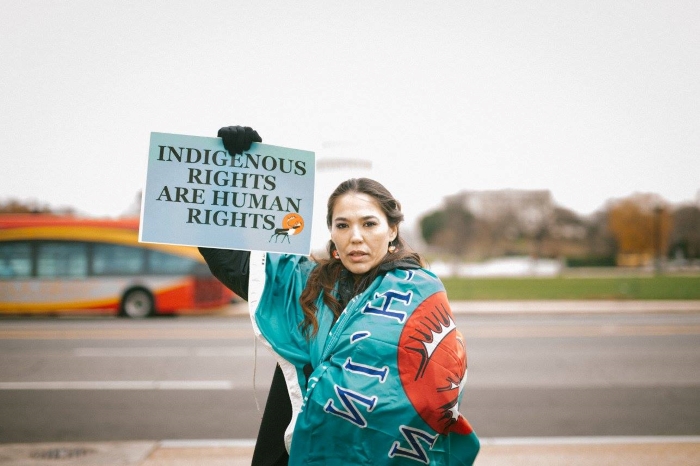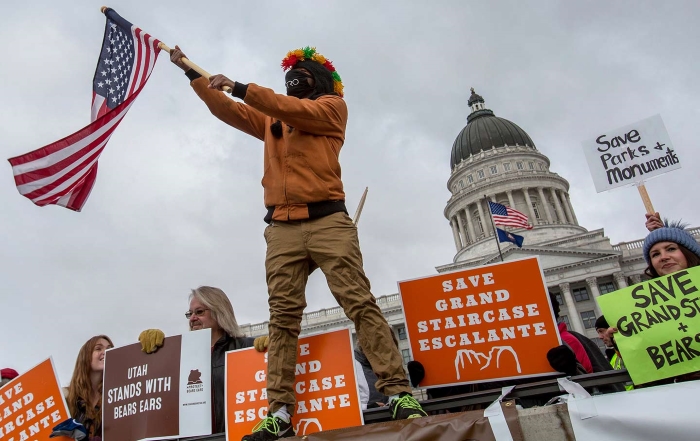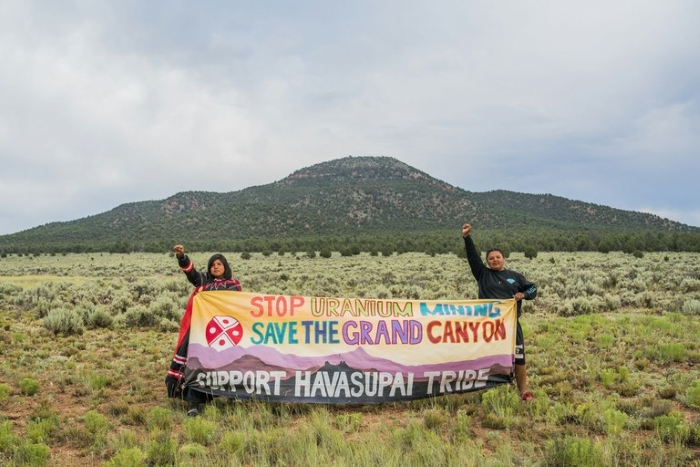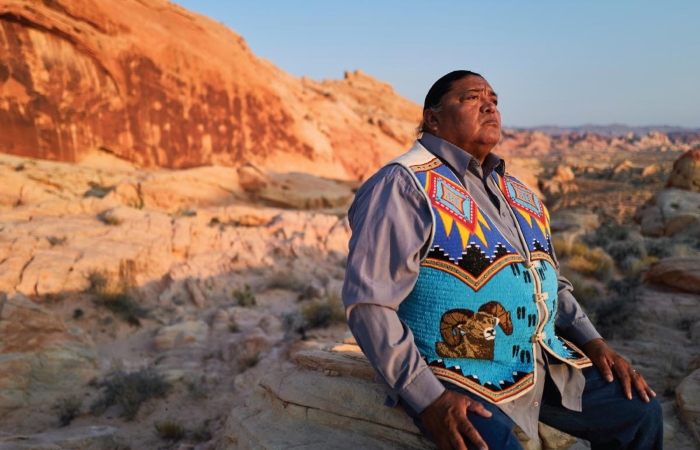The year of 2020 has brought with it an unprecedented number of challenges—struggles so big that we know Band-Aid solutions cannot provide the systemic change we truly need. When it comes to the climate and wildlife extinction crises, scientists are urging us to adopt a bold plan to protect at least 30 percent of undeveloped lands and waters by 2030.
If we protect the additional lands that are needed to reach 30 percent, those places can absorb a considerable amount of greenhouse gases—equivalent to taking more than 46 million cars off the road. In addition to fighting the climate crisis, this work can reduce public health threats like pandemics (exacerbated by out-of-balance natural systems), save threatened and vulnerable wildlife, and protect clean air and safe drinking water.
Join us this National Public Lands Day to fight for our climate and future. Read about five important fights to protect public lands this year and how to take action.
Bad Business in the Arctic National Wildlife Refuge:
His first year in office, Trump signed a major tax cut for billionaires—legislation that also shadily snuck in language to open the Arctic National Wildlife Refuge to oil and gas drilling. Just weeks ago, Trump’s Interior Department doubled down on this egregious effort. Interior Secretary Bernhardt finalized a plan that would auction off the Refuge’s entire 1.5 million-acre coastal plain to the fossil fuel industry. The landscape is sacred to the Gwich’in Nation, who have lived in the area since time immemorial and depend on the caribou herds that migrate there. Drilling here would be a disaster for the delicate ecosystem and an entire way of life.
Take action to protect Gwich'in lands and one of the last truly wild places. Tell Big Oil to stay out of the Arctic→ sc.org/ArcticRefuge

Bernadette Demientieff, Gwich’in Steering Committee. Photo: Indigenous Rising Media
The Blast-phemous Border Wall:
Perhaps Trump’s most relentless push has been his effort to build the border wall at any cost—no matter how much havoc it wreaks on communities, how much land it damages, or how many laws have to be broken. So far, Trump’s administration has built at least 300 miles of new and replacement walls, and they have no plan to stop. In 2020, wall construction crews blasted and blew up Organ Pipe Cactus National Monument, Indigenous burial grounds and sacred sites, and thousands of acres of public lands.
The Trump administration has also issued a record-breaking number of legal waivers for the projects. This means the Department of Homeland Security can completely neglect protections for the environment, Indigenous lands and cultural sites, and clean air and water to build the wall faster.
We must stop this agenda of destruction and hate. Join our borderlands team to fight for border communities, wildlife, and our breathtaking Southwestern landscapes→ sc.org/NoBorderWall

Border wall protest in Organ Pipe Cactus National Monument. Photo: Center for Biological Diversity

Injustice on Indigenous Lands:
In 2017, the Trump administration announced that it would slash protections for Bears Ears National Monument to 85 percent of its original boundaries, and Grand Staircase–Escalante National Monument by nearly 50 percent, marking the biggest rollback of public lands protections in American history. The unlawful move means mining companies have more ability to tear up these places for uranium and leave a toxic legacy on Tribal lands.This devastating, infuriating news kicked an entire coalition of communities, Tribal Nations, conservationists, and recreationists into action to push back on Trump’s anti-public lands agenda.
The historic legacy of Bears Ears is one this country cannot afford to lose. Years ago, five Tribal Nations overcame their historical differences to form the Intertribal Coalition to safeguard the history and depth of cultural, ecological, and natural richness that exists on that landscape. The fight for Bears Ears is not over. We must speak up and condemn in the strongest terms the travesty of carving up these national monuments to search for dirty fuels that lie beneath the surface. Learn more→ sc.org/BearsEars

Protest at the Utah capitol. Photo by: Benajmin Zack
The Grand Canyon Is Not a Toxic Dump:
The Trump administration wants to eliminate a 20-year ban on uranium mining near the Grand Canyon. The disastrous idea only serves to benefit the mining industry,whose uranium extraction has poisoned Indigenous communities throughout the Southwest for decades and continues to threaten sacred lands today.
Right now, the Grand Canyon Centennial Protection Act needs our support. This important piece of legislation would help safeguard Navajo, Havasupai, and Hopi lands and the health of their communities from toxic uranium pollution by making the mining ban permanent. Help permanently protect this world-renowned region and Tribal lands→ sc.org/GrandCanyon

Members of the Havasupai Tribe. Photo by: Jake Hoyungowa
The Unlikely Wins in the National Defense Authorization Act:
While the Trump administration finds every possible way to undermine environmental protection and progress, champions in Congress are fighting back. This year, conservation-minded decision-makers pushed for a National Defense Authorization Act that would ban the military from taking hundreds of thousands of acres of public and Tribal land in Nevada for bombing ranges. The legislation also includes protections for wilderness, wild and scenic rivers, California public lands, the Wild Olympics in Washington State, and more than half a million acres of recreation areas and critical habitat in Colorado, while making the temporary mining ban on lands surrounding the Grand Canyon permanent.
This bill presents a real opportunity to save public lands and use these places as carbon sinks to fight the climate crisis—even while the most anti-conservation president in history remains in office. For the sake of our climate, wildlife, and future generations, we need to get these protections in the National Defense Authorization Act over the finish line. This critical legislation will be debated and voted on by the end of the year. Stay tuned for ways to take action by following @sierraclub on Twitter.

Vice chairman of the Moapa Band of Paiutes, Greg Anderson. Photo by: Heidi Kyser.
Why We Keep Fighting:
Public lands serve as havens for wildlife and restorative retreats where we can experience nature’s health benefits. They are always worth fighting for. And right now, the work to protect these places may be more important than ever. We are facing battles on many fronts: a climate crisis, a human-caused mass extinction event, and a pandemic. Conserving natural lands means they can work as carbon sinks, protect vulnerable wildlife, and boost our mental and physical health. This National Public Lands Day, I encourage all of us to take a stand for our last wild places, the communities who need them, and our collective future. Learn more about our work to save 30 of our wild places by 2030 and join us→ sc.org/PublicLands.